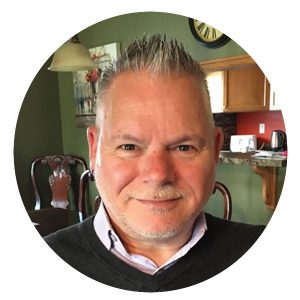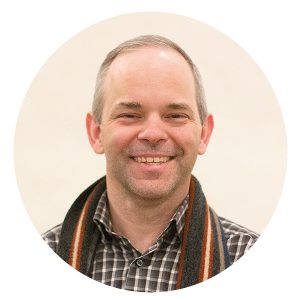The power of a great team is undeniable, from the ensemble cast of an award-winning film to a triumphant sports franchise making the post-season. The same is true when recovering and rehabilitating after a spinal cord injury; a superb team makes it possible to reach new heights. You only have to look at the Hamilton Health Sciences (HHS) Regional Rehabilitation Centre (RRC) for an outstanding team dynamic that gets results.
Made up of HHS RRC health care providers and SCIO representatives, the rehab team offers a comprehensive and interconnected array of supports for those navigating their journey from injury to independence. Working from their office located on the main level of the RRC, SCIO Regional Services Co-ordinator Rob Murphy and Peer Program Co-ordinator Ron Rattie feel fortunate to be partnered so closely with medical and therapy experts.

“Ron and I both have lived experience with SCI,” says Rob. “We bring that knowledge and relatability to clients and families, as well as our areas of expertise. In my case, that means offering a range of services for those in rehab and throughout the Hamilton region: help with housing, transportation, employment, funding for equipment and personal care support. Working right within Hamilton Health Sciences means we can connect with families soon after injury, even while still in the ICU. Then, our relationship develops further in rehab and carries on in the community.”
Rob credits the RRC medical and therapy team for making those early contacts possible. Weekly meetings with members of the acute team and the rehab team keep the communication channels open and make it possible to reach out to newly injured patients and their families.
In fact, the unique relationship between acute care and rehab is by design. HHS acute care and rehab services are centrally located, with both buildings next door to each other and connected by a pedestrian bridge.

“A strong partnership like this means we can catch clients along a continuum and prevent people from falling through the cracks,” says Rob. “I’m not a medical person, I’m a client and family advocate. So sometimes my perspective is a bit different from others on the team. But together, we do problem-solving and help clients move through rehab to life at home. Being involved in the whole journey makes me better aware of each client’s unique needs for independence.”
Ron Rattie’s role as Peer Program Co-ordinator fits equally well within the full team approach. Ron receives referrals from an HHS health provider when a client expresses interest in connecting with a peer who may have insights to share. That interest may come in the first week after injury, during rehab, or even after returning home. Ron calls on an established network of about 60 dedicated volunteers in the Hamilton region to create a good match for a client.
“Clients want to connect to someone with experience,” says Ron. “They may want general support or something more specific, like how to take a vacation or what it’s like to date with an SCI. I look at gender, age, level of injury and so on for a suitable fit. Individuals or families might then meet a peer volunteer once, many times, or even develop long-term friendships.”
Ron also arranges for monthly Peer Connections events that focus on specific topics like pain management or sexuality. He often brings in both a specialist and peer volunteers with personal experience. These events help clients expand their network and get tips and tricks on successfully transitioning back into their homes, work or school, and continue their pursuit of life goals.
Physiotherapist Diana Herrington and Recreational Therapist Rosemary Bellefeuille have the same vision. Members of the RRC team, they work closely with medical personnel and SCIO to advance the health of their patients. Both highly experienced in their fields, Diana and Rosemary appreciate the role that Rob and Ron play along the continuum of support.

“I can’t stress enough how valuable it is for my patients to see and talk to someone further along in their recovery or stage of life,” says Diana. “That might be Rob, Ron or a peer volunteer. There’s nothing like experience to show what’s possible. Rob and Ron understand the hospital system, what it’s like to be a patient and achieve success in their careers, and are incorporated right into the circle of care. This holistic model offers the best support possible for our patients.”
Rosemary agrees that the close connection to SCIO makes for a more effective and comprehensive rehab program. She understands how difficult it can be at times for patients to see a better future.

“We rely on the knowledge and support system offered by SCIO overall, including for our peer events like barbeques and the Christmas party,” says Rosemary. “It’s important for our patients to be able to relax and socialize while making connections in the community. Rob and Ron make that possible. They are vital members of the spinal cord injury team and bring a lot to the table that we can’t, because we don’t have the direct experience of an SCI.”
The RRC-SCIO collaboration is a model for support along the journey from injury to independence, within the acute team, rehab centre and throughout the larger Hamilton region.
“I really credit Hamilton Health Services with wanting to provide the best care possible, which includes having SCIO on site,” says Ron. “It really is a fantastic partnership.”










